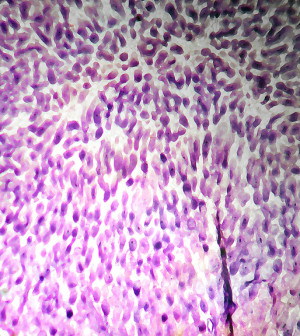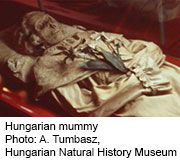- Navigating Your Midlife Crisis: Embracing New Possibilities
- City Raccoons Showing Signs of Domestication
- Mapping the Exposome: Science Broadens Focus to Environmental Disease Triggers
- One Week Less on Social Media Linked to Better Mental Health
- Your Brain Changes in Stages as You Age, Study Finds
- Some Suicide Victims Show No Typical Warning Signs, Study Finds
- ByHeart Formula Faces Lawsuits After Babies Sickened With Botulism
- Switch to Vegan Diet Could Cut Your Greenhouse Gas Emissions in Half
- Regular Bedtime Does Wonders for Blood Pressure
- Dining Alone Could Mean Worse Nutrition for Seniors
18th Century Mummies Reveal How TB Spread Through Europe


Naturally mummified bodies from an 18th century crypt in Hungary provide new insight into tuberculosis infections in Europe during that time, researchers say.
The discovery could also help health officials fight future tuberculosis (TB) outbreaks, the scientists suggested.
Analyses of samples taken from the bodies in the crypt in the Dominican church of Vac uncovered 14 TB genomes. The research suggests that some of the victims had several strains of TB, perhaps a common occurrence when the disease was at its peak in Europe, the researchers said.
“Microbiological analyses of samples from contemporary TB patients usually report a single strain of tuberculosis per patient. By contrast, five of the eight bodies in our study yielded more than one type of tuberculosis — remarkably from one individual we obtained evidence of three distinct strains,” study author Mark Pallen, a professor in the medical school at the University of Warwick in the United Kingdom, said in a university news release.
And study first author Gemma Kay, added, “Poignantly, we found evidence of an intimate link between strains from in a middle-aged mother and her grown-up daughter, suggesting both family members died from this devastating infection.”
Using the genome sequences of the TB strains they found in the crypt, the researchers concluded that the lineage of TB strains commonly found in Europe and America date to the late Roman period.
That supports a controversial theory that the most recent common ancestor of all TB strains occurred as recently as 6,000 years ago, the study authors said.
Pallen explained that “by showing that historical strains can be accurately mapped to contemporary lineages, we have ruled out, for early modern Europe, the kind of scenario recently proposed for the Americas — that is wholesale replacement of one major lineage by another.”
The researchers said their study, published April 7 in the journal Nature Communications, could also prove important in current and future TB diagnoses and control.
More information
The American Lung Association has more about tuberculosis.
Source: HealthDay
Copyright © 2025 HealthDay. All rights reserved.










